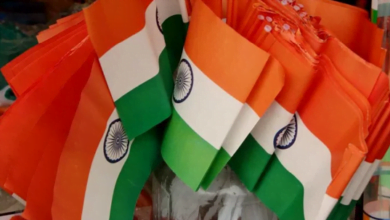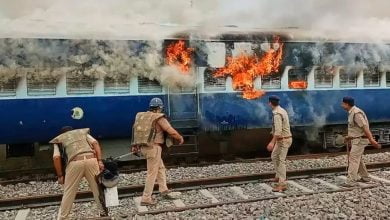
Arindum Soni – Faculty, UPSC IAS Exams
Marx’s “History repeats itself, first as tragedy, second as farce” is relevant to India. India’s history is full of cycles.
India’s communal riots predate independence. Religious riots cause violence, property damage, and death. India’s communal riots have changed throughout time. The demand for a Muslim homeland or the killing of a political leader often sparked these riots. In pre-independent India, religious, linguistic, and ethnic conflicts caused communal riots. The 1921 Moplah Rebellion in Malabar, Kerala, was violent. Muslim tenants revolted against Hindu landowners and the British authorities. The insurrection killed 2,000 Hindus. The Muslim League called for a community strike on 16 August 1946 on Direct Action Day. The Muslim community held a “Day of Action” to demand a Pakistani Muslim state. The strike caused widespread communal violence, especially in Calcutta (now Kolkata), killing 4,000 people. The 1947 Punjab Riots occurred during India-Pakistan partition. Hindu, Muslim, and Sikh sentiments drove the violence. The riots killed 200,000–2 million people. India has seen multiple communal riots following independence.
The 2002 Gujarat Riots followed the destruction of a train transporting Hindu activists in Godhra. The weeks-long riots killed almost 1,000 Muslims. Delhi Riots in 2020 included Hindus and Muslims. Protests against the Citizenship Amendment Act (CAA) led to riots that killed 50 people. Mumbai Riots in 1992-1993 followed the Babri Masjid demolition in Ayodhya. The months-long rioting killed almost 900 individuals. Indira Gandhi’s assassination sparked 1984 Sikh riots. After 1947, communal riots continued in India. Religious, political, and socioeconomic issues have triggered these riots.
British colonial policies caused multiple pre-independence economic crises in India. British colonial control caused India’s greatest famine, the Great Famine of 1876–78. Drought and British imports of Indian food grains precipitated the famine. Famine killed 5.5–10 million people. 1943 Bengal Famine British actions like exporting food grains and diverting resources to the war effort aggravated another Bengali famine during World War II. Famine killed 2.1–3 million people.
India’s economy suffered from the 1929 Great Depression. Farmer income declined as agricultural commodity prices fell. International trade fell during the slump, hurting India’s exports and manufacturing. India’s economy suffered from 1947’s Partition. India and Pakistan split industry, railways, and other resources after partition. Migration displaced skilled employees and entrepreneurs, lowering industrial production. After independence, India experienced various economic crises, some induced by domestic and others by external sources. Due to a big trade deficit, rising oil costs, and a drop in remittances, the 1991 Balance of Payments Crisis was severe. India needed an IMF loan to liberalize, privatize, and globalize its economy after the crisis. Consumer price inflation in India exceeded 10% in 2013-14. High food prices, supply-side limitations, and a falling Indian rupee produced inflation. The crisis forced the government to manage inflation via monetary and fiscal measures.
Farm incomes, productivity, and climate change have caused an agricultural crisis in India. Farmers protested for better prices and government support during the crisis.
Covid-19 Pandemic slowed India’s economy, costing jobs and consumer expenditure. The pandemic exposed India’s healthcare system’s flaws and caused a humanitarian crisis with millions of people going hungry and poor.
Ideological recurrence occurs before and after major events like independence. Before and after independence, India had ideological repeats. Before independence, Mahatma Gandhi and Jawaharlal Nehru advocated for an independent India. Nehru and others promoted secularism in pre-independence India.
After independence, Indian nationalism wanted sovereignty and territorial integrity. Secularism, enshrined in the Indian Constitution, maintained after independence. After independence, the government created policies and programs to combat social and economic inequality in India.
Before and after independence in 1947, India has a complex war history. The British East India Company and Tipu Sultan’s Kingdom of Mysore fought four Anglo-Mysore Wars (1767-1799). The British East India Company and Maratha Empire fought five battles from 1775 to 1818. British East India Company and Sikh Empire fought the First Anglo-Sikh War (1845-1846). The Sepoy Mutiny, or Indian Rebellion of 1857, was a massive revolt against British rule in India that failed but had enduring effects.
The 1947 India-Pakistan War was the first of numerous over Kashmir. China took Aksai Chin after the 1962 India-China War. In 1971, India defeated Pakistan and created Bangladesh. India and Pakistan fought a short conflict over Kashmir’s Kargil area in 1999. India-China Border Conflict (2020): A fierce skirmish in the Galwan Valley killed 20 Indian soldiers. India’s pre- and post-independence wars have had different causes and situations. However, we must remember the human cost of these conflicts and work for peaceful conflict resolution in the future.
Caste discrimination has plagued India since its independence from Britain in 1947. Untouchability, a severe type of caste-based discrimination, marginalized certain castes socially and economically. In the 19th century, Brahmo Samaj and Arya Samaj social reform organizations challenged caste and promoted equality. The Indian Constitution prohibits caste-based discrimination and guarantees equal opportunity. Indian government jobs, educational institutions, and political posts are reserved for historically disadvantaged castes and tribes. The Scheduled Castes and Scheduled Tribes (Prevention of Atrocities) Act, 1989, prohibits caste-based discrimination.
Despite these steps, caste-based prejudice affects millions of Indians from historically disadvantaged castes and tribes. The 1,500-person Peshtigo Forest fire is considered the deadliest in U.S. history. Drought, heavy winds, and logging and farming sparked the fire. Dry temperatures, heavy winds, and logging sparks sparked the Minnesota Great Hinckley Forest fire. The fire destroyed Hinckley and killed almost 400 people. Extreme heat, dryness, and human actions like arson and incompetence triggered the Black Saturday Bushfires (2009) in Australia. Fires killed 173 and destroyed almost 2,000 dwellings.
Oil spills The supertanker Amoco Cadiz ran aground off Brittany, France, spilling over 200,000 tons of crude oil. Thousands of marine animals died in the disaster. Gulf War Oil Spill (1991) Iraqi soldiers purposely dumped 240 million gallons of crude oil into the Persian Gulf, triggering one of the greatest oil spills in history. Oil polluted 600+ miles of coastline and killed thousands of marine wildlife. nearly several months, the Deepwater Horizon oil rig explosion in the Gulf of Mexico spilled nearly 200 million gallons of crude oil. The leak killed 11 individuals and devastated the Gulf Coast.
Recurring blunders raise questions about human nature and learning and growth. It implies that our ability to recognize patterns and learn from experience is unreliable, and we tend to repeat mistakes even with hindsight.
These questions illuminate philosophical questions about knowledge and wisdom. Wisdom—a product of experience or a more elusive quality that demands deep contemplation and understanding? Can we learn from others’ mistakes, or do we need to experience our acts’ consequences?








